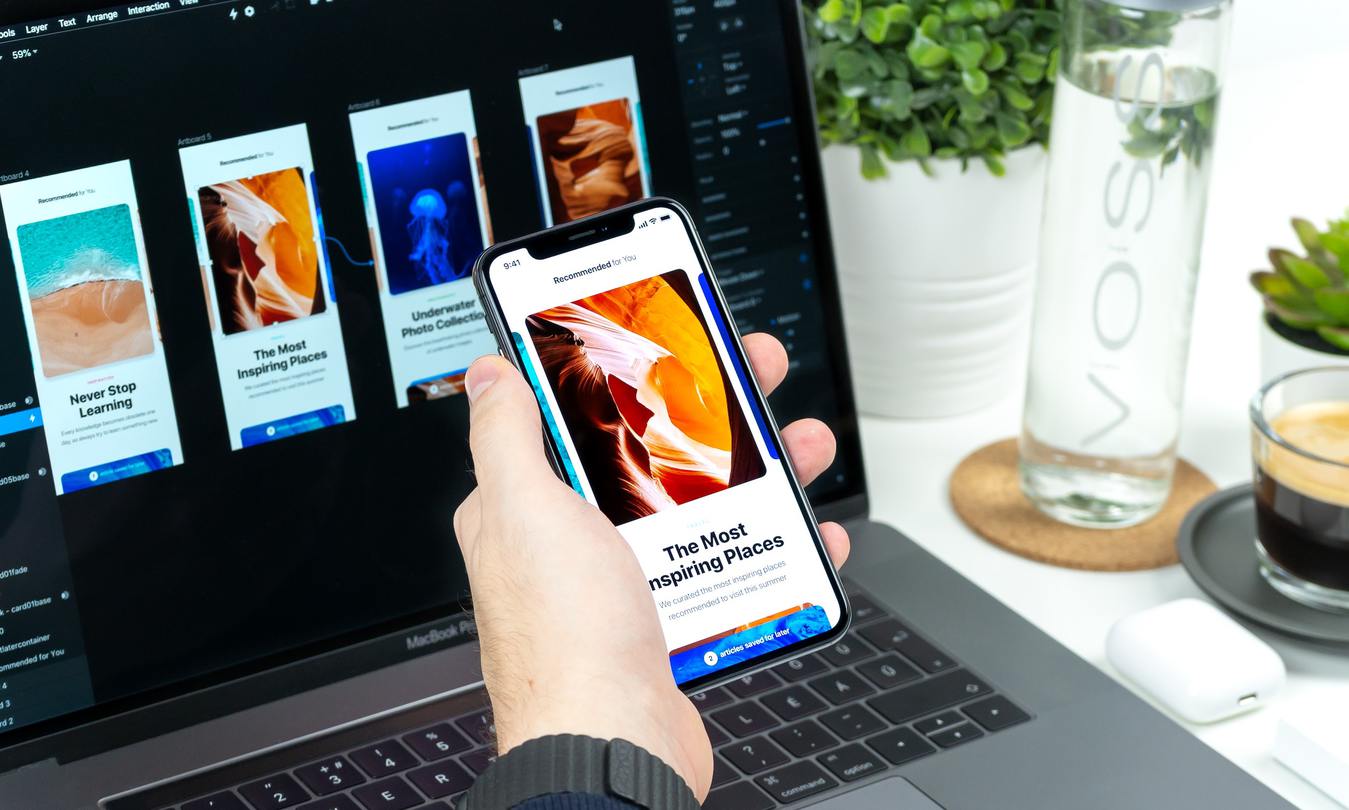eCommerce Design Trends for Success in 2024
In the ever-evolving realm of e-commerce, staying ahead of the curve is vital to success. The online shopping landscape is continually changing, and as an e-commerce business, it’s crucial to adapt to the latest design trends to provide an exceptional user experience and improve your website’s conversion rates. In this article, we will explore the most impactful e-commerce design trends 2024, ensuring your online store not only keeps up with the competition but excels.
Understanding the E-commerce Design Landscape
Before diving into the specific trends, it’s essential to comprehend the current e-commerce design landscape. The digital shopping world is highly competitive, with countless online stores vying for the attention of consumers. To stand out and succeed, your e-commerce site must not only be visually appealing but also offer seamless navigation, optimal performance, and a user-friendly experience.
Mobile-First Design

The Dominance of Mobile Shopping
In today’s digital age, smartphones are the go-to devices for online shopping. As a result, mobile-first design has become a fundamental aspect of e-commerce. Websites that are not optimized for mobile risk losing a significant portion of potential customers. Ensuring a responsive and mobile-friendly design is crucial for success.
Optimizing for Mobile Speed
Mobile shoppers demand speed. Slow-loading websites lead to high bounce rates and lost sales. To optimize for mobile speed, consider image compression, efficient coding, and utilizing Content Delivery Networks (CDNs) to ensure fast loading times, regardless of the user’s location.
Minimalistic Design

The Power of Simplicity
Minimalistic design continues to gain popularity in e-commerce. A clean and uncluttered layout not only looks visually appealing but also enhances the user’s ability to focus on the products or services offered. Simple, intuitive navigation can significantly improve the overall user experience.
The Role of Whitespace
Whitespace is an essential element of minimalistic design. It provides breathing space, making content more readable and products more visually appealing. Strategic use of whitespace can guide the user’s attention and create a sense of elegance.
Personalization and AI

Tailoring the Shopping Experience
Personalization is a game-changer in e-commerce. Leveraging AI and machine learning, businesses can provide highly tailored shopping experiences for their customers. This includes personalized product recommendations, content, and even individualized marketing strategies.
Chatbots and Customer Support
AI-driven chatbots are becoming increasingly common in e-commerce. These virtual assistants can handle customer queries, provide product information, and even facilitate transactions. They enhance user engagement and contribute to a seamless shopping experience.
Augmented Reality (AR) and Virtual Reality (VR)

Immersive Product Experiences
AR and VR technologies are revolutionizing the way customers shop online. They allow users to interact with products in a virtual environment, experiencing them in a more detailed and realistic manner. This technology is especially useful for industries like fashion, furniture, and interior design.
Reducing Return Rates
AR and VR can also help reduce return rates by allowing customers to visualize products accurately before purchase. This leads to more informed buying decisions and fewer instances of disappointment upon product arrival.
Sustainable and Eco-Friendly Design

Ethical Shopping
As environmental consciousness grows, consumers are increasingly drawn to businesses that adopt sustainable practices. E-commerce stores can showcase their commitment to sustainability through eco-friendly design choices, such as recyclable packaging, energy-efficient operations, and sustainable product sourcing.
Transparency and Certification
Providing transparency about eco-friendly practices and certifications on your website can build trust with environmentally conscious consumers. It’s not only about the products you sell but also about the values your e-commerce business upholds.
Voice Search Optimization

The Rise of Voice Assistants
With the increasing use of voice-activated devices, voice search optimization is a trend to watch. Your e-commerce site should be voice-search-friendly, ensuring that potential customers can find your products using voice commands.
Long-Tail Keywords
Voice searches tend to be more conversational and longer in form. Incorporating long-tail keywords in your product descriptions and content can improve your chances of appearing in voice search results.
Video Content Integration

Visual Storytelling
Video content is a powerful tool for e-commerce. It allows you to tell a visual story about your products, showcase their features, and engage customers. Including product videos and explainer videos can greatly enhance the shopping experience of visitors.
Live Product Demos
Live streaming and product demos can provide real-time interaction with customers. This enables them to ask questions and see products in action, replicating the in-store experience.
Conclusion
In the ever-evolving world of e-commerce, staying on top of design trends is paramount. Mobile-first design, minimalistic layouts, personalization, AR and VR, sustainability, voice search optimization, and video content integration are some of the key trends to adopt in 2024. By implementing these strategies, you can create a website that not only captivates your audience but also drives sales and fosters customer loyalty.
FAQs
Q1: What is the significance of mobile-first design in e-commerce?
A1: Mobile-first design is crucial as it ensures that your e-commerce website is optimized for mobile devices, which are the primary platform for online shopping today. This optimization improves user experience and can lead to higher conversion rates.
Q2: How does personalization benefit e-commerce businesses?
A2: Personalization enhances the shopping experience by tailoring product recommendations and content to individual customers’ preferences. This can lead to increased sales and customer loyalty.
Q3: What are some examples of eco-friendly design choices in e-commerce?
A3: Eco-friendly design choices may include using recyclable packaging, adopting energy-efficient operations, and sourcing products from sustainable and ethical suppliers.
Q4: How can voice search optimization benefit e-commerce websites?
A4: Voice search optimization can help e-commerce websites reach a broader audience by catering to users who prefer voice commands. By incorporating relevant long-tail keywords, you can improve your visibility in voice search results.
Q5: Why is video content integration important for e-commerce?
A5: Video content engages customers by providing visual and interactive product experiences. It can help customers make informed decisions and enhance their shopping experience.






